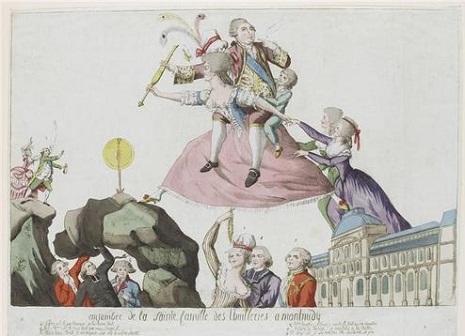
Recently, the “newsish” website Gawker ran a nasty little expose on the CFO of a major media company, who had allegedly attempted to purchase sex from a porn star. Many readers were livid, citing an invasion of privacy, or even perhaps a whiff of homophobia in the story (the CFO and the porn star were both men). Gawker argued that their mission has always been to dig up dirt on the rich and powerful, and though there was some debate on whether or not the subject of their story was rich and powerful enough to constitute such focus, they argued the story constituted public interest before eventually retracting it with apology.
The scandal sparked a debate, with Jeet Heer over at The New Republic arguing that such nasty tactics aren’t productive praxis for class war:
The Condé Nast executive is seen as a legitimate subject for attack because of his wealth and class privilege. What the adherents to Gawkerism rarely consider is whether tabloid gossip is really the best tool for fighting a class war.
Unfortunately, Heer completely overlooks the fact that historically, gossip, libel and denigration have been an integral aspect of class war, and the tabloids have usually been the medium of dissemination. Just ask Maria Antoinette, for whom the libelle—a smutty little tabloid in the form of a political pamphlet—proved an incredibly effective piece of political propaganda. These were not sophisticated political tracts—they often simply depicted Antoinette in pornographic situations—orgies, incest, lesbianism—everything you could imagine. Sometimes the purpose of these cartoons was to actually accuse Antoinette of such acts, but often they were simply a form of degradation.
The cartoon above features Antoinette with the Marquis de Lafayette, a politician and general who fought alongside against England during the American Revolution. Considered a military hero, he was appointed to the National Assembly by the King, and though he remained a royalist, he sympathized with Revolutionary values and attempted to institute them politically. As a result, he was distrusted by both the revolutionaries and the monarchy. There is no evidence that he had an affair with Antoinette; the cartoon is actually intended to illustrate Lafayette’s allegiance to the crown. His “steed” is a pun, as the French word for “Austrian” is very similar to “ostrich,” and Antoinette was often referred to as “Austrichienne,” or “Austrian Bitch.”.
You may find the tabloids gauche, you may find their targets undeserving, you may even argue that we live in a more civilized time—a time when tabloids should be retired in favor of more dignified debate and politics; but if you’re wondering whether or not tabloids are effective in class war, I’d remind you that the road to the guillotine has always been paved with smut.

Marie was often depicted in lesbian trysts, generally assumed to be Yolande de Poligna or Princesse de Lamballe. The text reads, “I now breathe only for you, a kiss my beautiful angel.”

In a subtler comic, Marie stepping from Versailles to safety, bearing the King and Prince on her back, giving the French people a view up her dress in the process.
More 18th century political smut after the jump…





